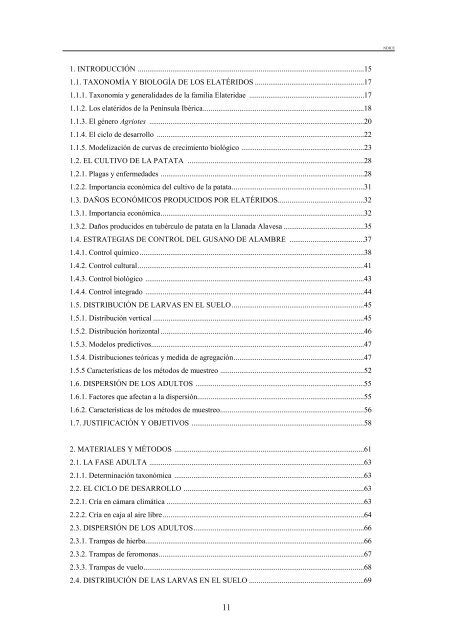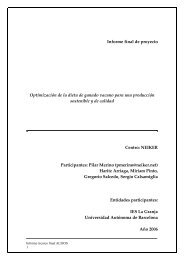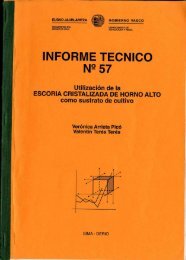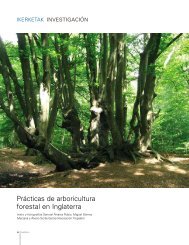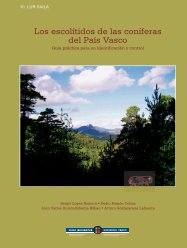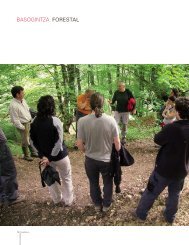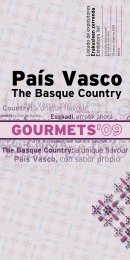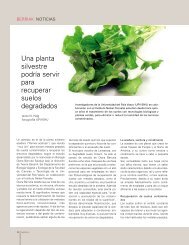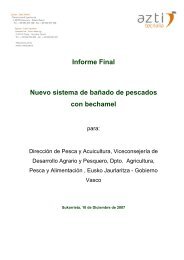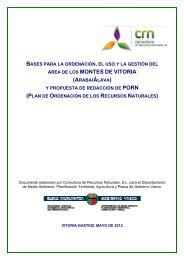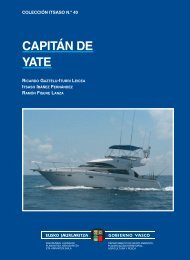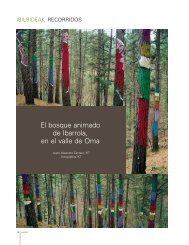BiologÃa del gusano de alambre (Agriotes spp.) - Nasdap.ejgv ...
BiologÃa del gusano de alambre (Agriotes spp.) - Nasdap.ejgv ...
BiologÃa del gusano de alambre (Agriotes spp.) - Nasdap.ejgv ...
- No tags were found...
You also want an ePaper? Increase the reach of your titles
YUMPU automatically turns print PDFs into web optimized ePapers that Google loves.
• ndice1. INTRODUCCIÓN ......................................................................................................................151.1. TAXONOMÍA Y BIOLOGÍA DE LOS ELATÉRIDOS .........................................................171.1.1. Taxonomía y generalida<strong>de</strong>s <strong>de</strong> la familia Elateridae ............................................................171.1.2. Los elatéridos <strong>de</strong> la Península Ibérica....................................................................................181.1.3. El género <strong>Agriotes</strong> ................................................................................................................201.1.4. El ciclo <strong>de</strong> <strong>de</strong>sarrollo ............................................................................................................221.1.5. Mo<strong><strong>de</strong>l</strong>ización <strong>de</strong> curvas <strong>de</strong> crecimiento biológico ................................................................231.2. EL CULTIVO DE LA PATATA ............................................................................................281.2.1. Plagas y enfermeda<strong>de</strong>s ..........................................................................................................281.2.2. Importancia económica <strong><strong>de</strong>l</strong> cultivo <strong>de</strong> la patata.....................................................................311.3. DAÑOS ECONÓMICOS PRODUCIDOS POR ELATÉRIDOS.............................................321.3.1. Importancia económica..........................................................................................................321.3.2. Daños producidos en tubérculo <strong>de</strong> patata en la Llanada Alavesa ..........................................351.4. ESTRATEGIAS DE CONTROL DEL GUSANO DE ALAMBRE .......................................371.4.1. Control químico.....................................................................................................................381.4.2. Control cultural......................................................................................................................411.4.3. Control biológico ..................................................................................................................431.4.4. Control integrado ..................................................................................................................441.5. DISTRIBUCIÓN DE LARVAS EN EL SUELO.....................................................................451.5.1. Distribución vertical ..............................................................................................................451.5.2. Distribución horizontal ..........................................................................................................461.5.3. Mo<strong><strong>de</strong>l</strong>os predictivos...............................................................................................................471.5.4. Distribuciones teóricas y medida <strong>de</strong> agregación....................................................................471.5.5 Características <strong>de</strong> los métodos <strong>de</strong> muestreo ...........................................................................521.6. DISPERSIÓN DE LOS ADULTOS ........................................................................................551.6.1. Factores que afectan a la dispersión.......................................................................................551.6.2. Características <strong>de</strong> los métodos <strong>de</strong> muestreo...........................................................................561.7. JUSTIFICACIÓN Y OBJETIVOS ..........................................................................................582. MATERIALES Y MÉTODOS ...................................................................................................612.1. LA FASE ADULTA ................................................................................................................632.1.1. Determinación taxonómica ...................................................................................................632.2. EL CICLO DE DESARROLLO ..............................................................................................632.2.1. Cría en cámara climática .......................................................................................................632.2.2. Cría en caja al aire libre.........................................................................................................642.3. DISPERSIÓN DE LOS ADULTOS.........................................................................................662.3.1. Trampas <strong>de</strong> hierba..................................................................................................................662.3.2. Trampas <strong>de</strong> feromonas...........................................................................................................672.3.3. Trampas <strong>de</strong> vuelo...................................................................................................................682.4. DISTRIBUCIÓN DE LAS LARVAS EN EL SUELO ............................................................6911I


